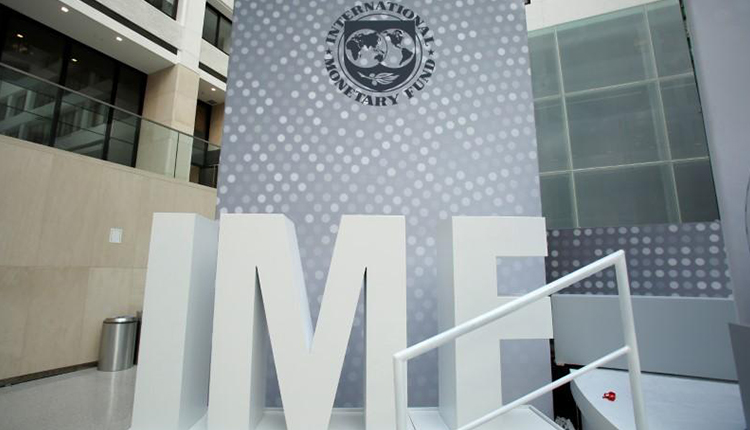Since the implementation of its economic reform programme, Egypt has managed to adopt a financial and monetary policy that has helped it pull the economy out of years of muddling and weakness, Ahram online reported on Saturday.
The International Monetary Fund (IMF) said before implementing the economic reform programme, Egypt had adopted inconsistent macroeconomic policies that led to a build-up of significant imbalances including huge budget deficits, loose monetary policy, and a fixed exchange rate.
Such bad conditions had resulted in a drastic reduction in foreign exchange reserves, high inflation, and unsustainably high levels of public debt, and consequently, growth had fallen and unemployment had increased, especially among women and youth, according to the IMF.
Yet, with the completion of the program in July 2019, which was financed with a $12 billion loan under the IMF’s EEF, the resulting macroeconomic signs reflect how Egypt has overcome all odds and started its journey towards a stable economy, especially with regard to financial and monetary policies.
According to finance ministry data, Egypt’s growth rate recorded 5.6 percent in FY2017/2018, then increased to 5.7 percent in FY2018/2019. The unemployment rate dipped to 8.9 percent in December 2018, and continued its decline to record 8.1 percent by the end of 2019.
Moreover, Egypt has managed to curb the budget deficit which dropped in FY2017/2018 below the 10 percent for the first time in six years, recording 433.9 billion pounds, or 9.8 percent of total GDP, and has continued to curb it to record 236.7 billion pounds, or 3.8 percent of GDP, in the first half of FY2019-2020, compared to 186.7 billion pounds, or 3.6 percent of GDP, in July-December of FY2018-2019.
For monetary policy, the Central Bank of Egypt (CBE) intended to put in place a formal inflation target of 9 percent and set interest rates according to the global economy conditions, and at the same time taking into consideration the recent rates of inflation.
It also floated the Egyptian pound in November 2016 to make it subject to supply and demand forces.
Despite such an action resulting in a surge in the US dollar prices in the domestic market of more than 40 percent, it managed to eradicate the black market, and the Egyptian pound has witnessed a gradual recovery as of February 2017.
Meanwhile, Egypt’s net international reserves (NIRs) have grown from under $25 billion in 2016 to around $45 billion in February 2020, before witnessing a notable decline due to the COVID-19 crisis.
The budget deficit declined as well to 8.2 percent of gross domestic product (GDP) during last fiscal year, while primary surplus hit 2 percent of GDP.
Egypt also has managed to curb the surge of the inflation rate as of 2018 when it declined to 20.86 percent in 2018, down from 23.54 percent in 2017.
It continued to drop to record 13.87 percent in 2019, reaching 5.86 percent in 2020.
Such achievements have helped Egypt hold up against the COVID-crisis and strengthen its economic conditions amid the harsh impacts of the pandemic.
According to Prime Holding, the CBE takes preemptive steps toward building more resilient buffers to protect the economy against protracted uncertainty due to COVID-19, as total reserves (official and non-official) now stand at $41 billion, covering in excess of 7.8 months of merchandise imports and 3.6 times short-term external debt.
In addition, Egypt was in a strong position that allowed it to appropriate 100 billion pounds for backing the affected economic sector under the President Abdel Fattah al-Sisi’s instructions, which was enhanced by the package of unprecedented precautionary measures and actions that have been taken by the CBE and the cabinet in order to curtail COVID-19 impacts.
These actions included introducing 3 percent (300 bps) cuts to the key interest at one time, providing additional allocations for the affected sectors, providing 20 billion pounds from the CBE to back the stock exchange with an 3 billion pounds from the National Bank of Egypt for the same purpose, in addition to other facilities.
Banking expert Hani Aboulfottouh said that the CBE is using the monetary policy’s instrument according to the conditions that Egypt witnesses, adding that it has managed to accomplish its mission.
Speaking to Ahram Online, Aboulfottouh said that the CBE has managed to achieve the Egyptian pound’s exchange price stability, curb the inflation rate, boost economic growth and stability, and achieve the balance of payments.
He also added that Egypt has attained an initial budget surplus of 2 percent in the first half of FY2019/2020, which is better than what was targeted, while the government seeks to decrease the public debt to GDP ratio to 83 percent by the end of FY2019/2020, down from the targeted 89 percent.
The government also targets raising the budget’s resources through expanding the tax and non-tax revenue base, Aboulfottouh said.
Meanwhile, banking expert and member of parliament’s economic affairs committee Bicent Fahmy told Ahram Online that Egypt was in need of a clear monetary and financial policy to drive its economic growth, and that is what happened with the implementation of the economic reform program.
She added that the financial and monetary policy that Egypt has adopted since November 2016 has resulted in improving the macroeconomic indices, but the real economy still needs more to grow.
“Egypt needs to deepen public-private partnerships, with a special focus on sectoral growth over industry, agriculture, tourism and other economic and production sectors with continuous assessment for every sector,” Fahmy said.
She also stressed that Egypt is on the right track in terms of monetary policy, but it needs to manage the financial policy in a better way to maximise the gains of the economic reform program amid the current crisis.



